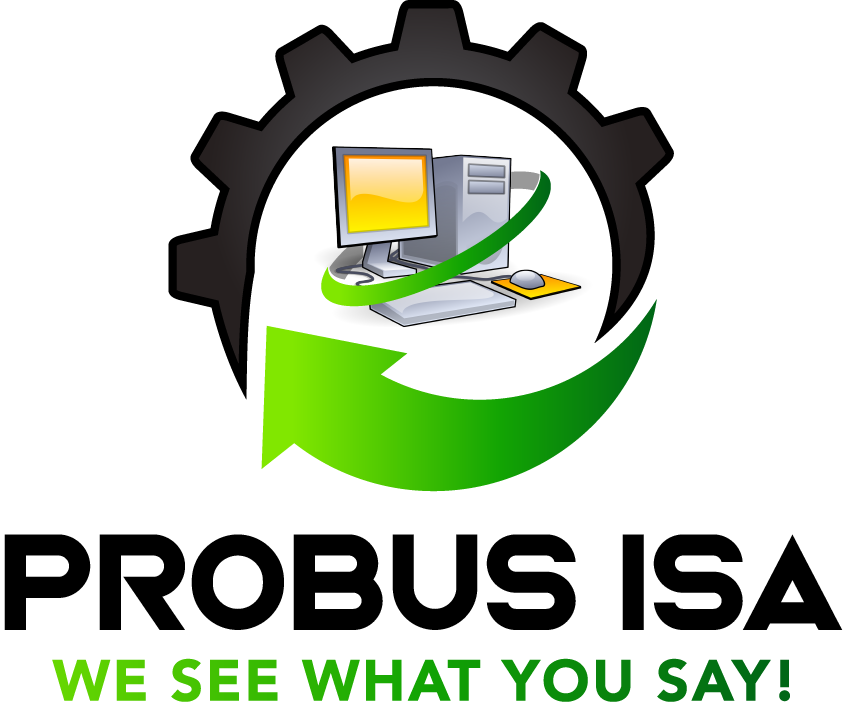One Stop Shop For All Your Electronics Needs!
This Probus ISA guide comprehensively covers all aspects of oscilloscope instruction and introduction. It’s for those who want to master signal analysis along with all its functions. The instrument is more like a miniature technology that is specifically designed to analyze audio frequency signals. It serves as a powerful tool for studying AC electronics, neural research, and operational amplifiers.
About Oscilloscope Software
Oscillogoat is a digital oscilloscope software designed for processing and analyzing audio frequency signals. Affordable yet highly capable, It enables users to observe, analyze, and process signals in real time, providing valuable insights into patterns, anomalies, and trends in electrical systems. Its ability to display data in multiple formats, such as single and dual-channel views, X-Y plots, spectrograms, and spectrum analysis makes it a necessary need for a wide range of scientific and technical applications.
Key Capabilities
- Real-Time Data Processing: This computer oscilloscope software converts analog signals to digital in real time for accurate analysis.
- Data Storage and Playback: It consists of four buffers which holds up to 10,000 32-bit numbers each, enabling independent processing and playback through speakers.
- Display Modes: The display includes single channel, dual channel, X-Y mode, color spectrogram, and spectrum analysis for flexibility.
- Software Compatibility: The best part about this oscilloscope software is that it is compatible with Microsoft Excel, Lotus, Matlab, and Mathematica, making data integration effortles
Hardware Requirements
- Sound Card: It works with Creative Soundblaster 16 and compatible ISA-type soundcards.
- Input Settings: It uses line-in input, with volume set to maximum. Voltage range: -0.5 to 0.5 volts.
How to Get Started with Oscilloscope Software
- Doing the Setup: Connect the soundcard, configure the line-in input, and adjust the pre-amplifier gain using the F9 Setup function.
- Understanding Buffers: The computer oscilloscope software utilizes four buffers for storing data. Each buffer can independently process and playback signals.
- Choosing Display Modes: Check different display options such as single trace or spectrogram to find the best visual representation of your signal.
Key Functions and Features
Oscilloscope software has some powerful features like zooming in on graphs, performing mathematical operations like averaging and differentiation, or applying Fast Fourier Transform (FFT) to analyze frequency content are all accessible with straightforward commands.
Function | Description |
Scope Function (F1) | Displays real-time data and spectrograms. Offers modes like single trace, dual trace, X-Y mode, spectrogram, and spectrum analyzer. Voltage range is -0.5 to 0.5 volts. Pre-amplifier gain can be set using F9. |
Draw Function (F2) | Plots data from a selected buffer. Adjust graph placement using a red box and display by pressing Enter. |
Zoom Function (F3) | Allows zooming into graphed data. Use a red box to select the graph, adjust the region with arrow keys, and redraw with ‘q’ or ‘Q’. |
Process Function (F4) | Processes data with options like differentiation, averaging, algebraic operations, condensing, limiting, and integration. Results can be plotted with the Draw function. |
Fast Fourier Transform (FFT) Function (F5) | Calculates FFT of data with forward or reverse transform options. Supports Hamming, Hanning, or no windowing. |
Store Function (F6) | Saves data to disk in RL1 or PRN format. Use Draw and Zoom to select data, specify file name and directory, and choose file type using F9. |
Retrieve Function (F7) | Loads data from disk into a buffer. Ensure the file format (RL1 or PRN) matches the setup. |
Reverse Function (F8) | Toggles between positive and negative images for better printing results. |
Setup Function (F9) | Sets parameters such as sample rate, buffer size, pre-amplifier gain, axis ticks, file type, and graphic display options. Stores defaults for future use. |
Playback Function (F10) | Plays back buffer data through speakers. Specify the buffer number and volume percentage. |
Exit Function (F11) | Exits the program and returns to the operating system. |
Scope Function Commands Table
Feature | Command | Description |
Graph Type | g/G | Cycles through display modes. |
Sample Rate | r/R | Sets sample rate (5,000 to 44,000 samples per second). |
Multi-trace vs. Single | s/S | Toggles between modes. |
Trigger Modes | i/I, e/E, f/F | Internal, external, or free-run triggers. |
Buffer Size | b/B | Adjusts the size of the data buffer. |
Auto Scale | a/A | Toggles auto-scaling of graphs. |
Return to Main Menu | x/X | Exits the current view to return to the main menu. |
Arrow Keys | N/A | Controls X and Y-axis scaling. |
Read More: What Does an Oscilloscope Measure? A Complete Guide
How Can I Use Oscillogoat with Other Programs
Oscillogoat extends its functionality by integrating with widely used oscilloscope software, making it a versatile tool for various tasks.
Simple Data Export for General Use:
- Oscillogoat allows you to export data in PRN format, which is widely supported.
- This makes it easy to analyze and manipulate data in programs like Microsoft Excel or Lotus.
- With these tools, you can create detailed tables, charts, and summaries quickly, saving time and effort.
Advanced Analysis for Complex Tasks:
- For deeper scientific or mathematical exploration, Oscillogoat’s data is compatible with powerful tools like Mathematica and Matlab.
- Its oscilloscope manual software provides advanced functionalities such as custom scripting, modeling, and simulations, enabling specialized computations.
- Oscillogoat is not limited to basic analysis but can support even the most complex neural research needs.
Graph Customization for Professional Outputs:
- Graphs generated in Oscillogoat can be easily imported into tools like Microsoft Word or Image Forge.
- These programs allow you to edit, enhance, and customize the graphs, making them visually appealing and suitable for presentations or reports.
- This is especially useful for academic, professional, or client-facing deliverables where clarity and polish are essential.
Read More: How to Use an Oscilloscope – A Beginner’s Introduction
Tips for Effective Use
Experiment with Modes:
Try different display options to find the most insightful representation of your signal.
Save Often:
Regularly store your data to avoid accidental loss.
Calibrate Properly:
Ensure pre-amplifier and voltage settings are adjusted for optimal performance.
Note: This computer oscilloscope software works best with widely-used programs like Microsoft Excel, Lotus, and Matlab, making data export and manipulation easy. Its compatibility with simple text files ensures that even those new to advanced equipment can handle and interpret the data.

